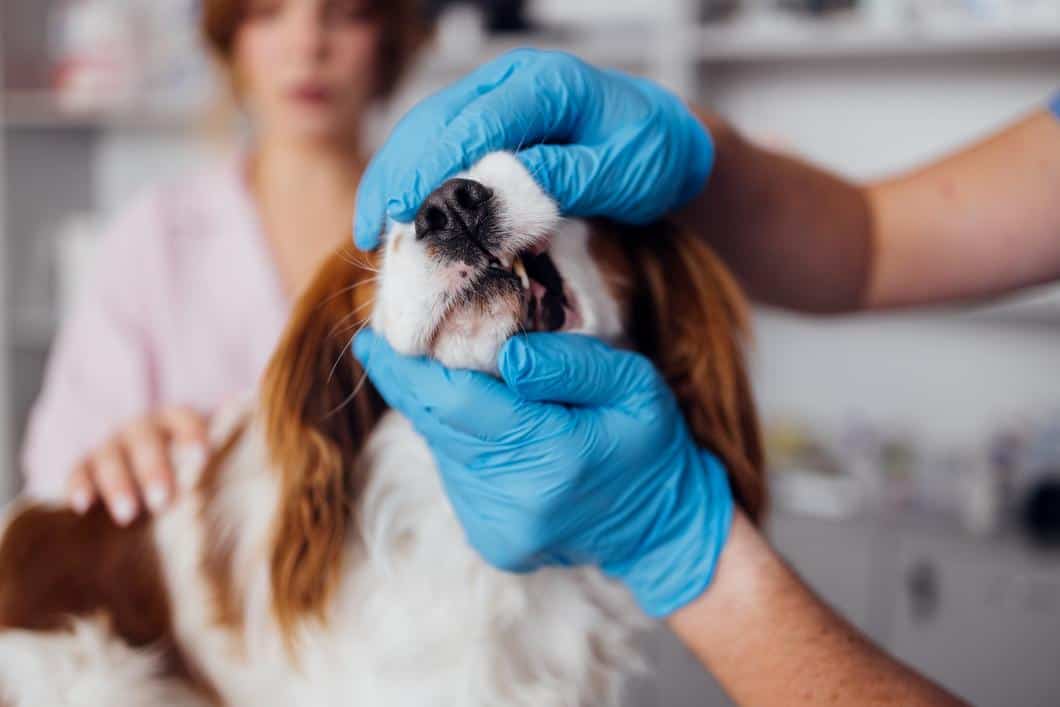Common Signs of Dental Disease in Pets and How to Spot Them Early

Dental disease in pets can lead to serious health issues throughout the body. It’s important to keep a close eye on your pet’s oral health, and to act quickly if you spot any potential issues. Usually the first obvious sign of dental disease is bad breath. There are many signs of dental disease in pets, and the ability to identify them can lead to early intervention, effective treatment, and an even longer, happier life.
A Look at Plaque and Tartar
The by-product of undigested food particles, oral bacteria, and saliva, plaque is a sticky film that forms on the surface of teeth, particularly on the gumline.
Left alone, minerals in the saliva cause plaque to harden into tartar, or dental calculus. Unfortunately, tartar, once formed and left to accumulate, can only be removed by professional dental scaling and cleaning.
Without regular intervention, plaque nurtures the presence and proliferation of dangerous oral bacteria to form and flourish inside the mouth. Once it develops into tartar, more plaque can build on the teeth, causing irritation, inflammation, and infection of the gums.
What Is Periodontal Disease?
Caused by ongoing infection and inflammation of the gums, tooth structures, and bones around the teeth, periodontal disease starts with plaque. Gingivitis, or the inflammation of the gums, is what happens when tartar build-up causes the gums to swell, bleed, and as the disease progresses, ultimately recede. Furthermore, periodontal disease involves tooth loss and associated infections that may lead to the heart, liver, and kidneys.
Chronic pain is a known symptom of dental disease in pets. The following signs may accompany pain or discomfort, or may occur beforehand:
- Discolored teeth
- Red, swollen, bleeding gums
- Bad breath
- Dropping food or favoring one side of the mouth when chewing
- Unexplained weight gain
- Drooling
- Sensitivity to touch
Seeking Help Early
We encourage pet owners to reach out to us if you notice any of the above signs. An oral exam can tell us a lot, but because the reach of periodontal disease is far beneath the gums, digital X-rays are critical during any dental procedure. Conducted under general anesthesia, X-rays provide details about bone loss, fractured teeth, and more.
Scaling removes tartar accumulation on the gum line while cleaning and polishing the teeth to make them look and feel bright and shiny. If medication is necessary to curb infection or mitigate pain, we will address these with owners prior to going home.
A Pivot Towards Daily Care
If possible, it’s best to introduce pets to brushing when they are young and open to new things, but pets of all ages can learn that it’s a fun, rewarding experience. Daily brushing at home can drastically limit plaque’s foothold in the mouth, and reduce the chance of tartar from accumulating.
Additionally daily use of products like dental rinses, chews, treats, sprays, wipes, and diets with approval from the Veterinary Oral Health Council can help to reduce plaque up to 20%.
Please call us at (720) 894-4005 with any questions about pet dental disease, or if you’d like to schedule an appointment.
